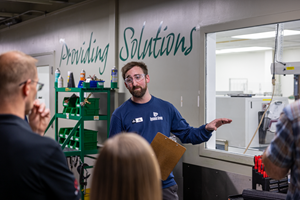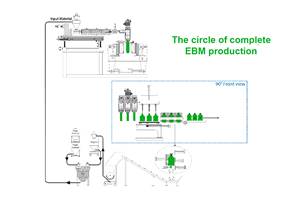Food Packaging Should Remain Strong
But industrial markets could slip.
There are three primary industries that we track that drive packaging demand: food, retail (primarily trash and t-shirt bags), and industrial (primarily shipping materials). In our January report, all three industries looked to be doing well. But things have recently changed. While food packaging should see continued strength—if not growth—retail packaging and institutional packaging seem poised for a contraction. Here’s why:
Real Disposable Income. April real disposable income was $12.56 billion (seasonally adjusted at an annual rate), an all-time high. Moreover, the data for the fourth quarter of 2015 and the first quarter of 2016 generally was revised higher. In April, real disposable income grew 3.3% compared with one year ago, which was slightly faster than the historical average growth rate. In the first four months of 2016, the month-over-month rate of growth has accelerated from its low of 3% in December 2015. However, the annual rate of growth has remained unchanged at 3.4%.
Food Packaging. Somewhat surprisingly, real disposable income tends to lead food and beverage spending by almost a year. Food and beverage spending contracted at a very modest rate in 2015. But with the strong growth in income, food and beverage spending has grown at a rapidly accelerating rate in the first four months of 2016. The annual rate of growth in spending has gone from -0.1% in November to 0.7% (about half the historical average) in April. But the annual rate of growth should continue to accelerate as three of the last four months had spending growth at 1.3% or more compared with one year ago. In turn, food and beverage spending tends to lead food and beverage production. Food and beverage production was already growing at nearly its fastest rate in eight years. If food and beverage spending continues to grow at an accelerating rate, then food packaging should be poised for further growth in 2016.
Retail Packaging. Probably the best proxy for retail packaging is the clothing and footwear industry. Consumer spending on clothing and footwear has been growing at a decelerating rate since the fall of 2015. However, other than the spike in 2011, the current rate of growth in clothing spending was still one of the fastest since late 2006. Production of clothing and footwear has been virtually flat over the last six to 12 months. The retail packaging market seems to be flat at best, which is not surprising given the recent poor results of many major retailers.
Institutional Packaging. Primarily, institutional packaging consists of stretch film and sheet and tubing, but consumer and industrial product liners and shrink film also are a significant part of institutional packaging. Since all of this packaging is used to ship product, tracking the changes in the trucking industry can provide a good estimate of what is happening with institutional packaging.
The Bureau of Transportation Services has an index for the freight industry, and it has come down from its record highs. Compared with one year ago, the index has declined in three of the last five months. While the index was still growing year-over-year in March, it’s likely that the annual rate of change will begin contracting soon. This is a negative sign for institutional packaging.
ABOUT THE AUTHOR
Steven Kline Jr. is part of the fourth-generation ownership team of Cincinnati-based Gardner Business Media, which is the publisher of Plastics Technology. He is currently the company’s director of market intelligence. Contact: (513) 527-8800 email:skline2@gardnerweb.com
blog: gardnerweb.com/economics/blog
Related Content
3D Printed Spine Implants Made From PEEK Now in Production
Medical device manufacturer Curiteva is producing two families of spinal implants using a proprietary process for 3D printing porous polyether ether ketone (PEEK).
Read MoreWhat to Look for in High-Speed Automation for Pipette Production
Automation is a must-have for molders of pipettes. Make sure your supplier provides assurances of throughput and output, manpower utilization, floor space consumption and payback period.
Read MoreMedical Molder, Moldmaker Embraces Continuous Improvement
True to the adjective in its name, Dynamic Group has been characterized by constant change, activity and progress over its nearly five decades as a medical molder and moldmaker.
Read MoreGet Color Changes Right In Extrusion Blow Molding
Follow these best practices to minimize loss of time, material and labor during color changes in molding containers from bottles to jerrycans. The authors explore what this means for each step of the process, from raw-material infeed to handling and reprocessing tails and trim.
Read MoreRead Next
Making the Circular Economy a Reality
Driven by brand owner demands and new worldwide legislation, the entire supply chain is working toward the shift to circularity, with some evidence the circular economy has already begun.
Read MoreLead the Conversation, Change the Conversation
Coverage of single-use plastics can be both misleading and demoralizing. Here are 10 tips for changing the perception of the plastics industry at your company and in your community.
Read MoreFor PLASTICS' CEO Seaholm, NPE to Shine Light on Sustainability Successes
With advocacy, communication and sustainability as three main pillars, Seaholm leads a trade association to NPE that ‘is more active today than we have ever been.’
Read More.JPG;width=70;height=70;mode=crop)










